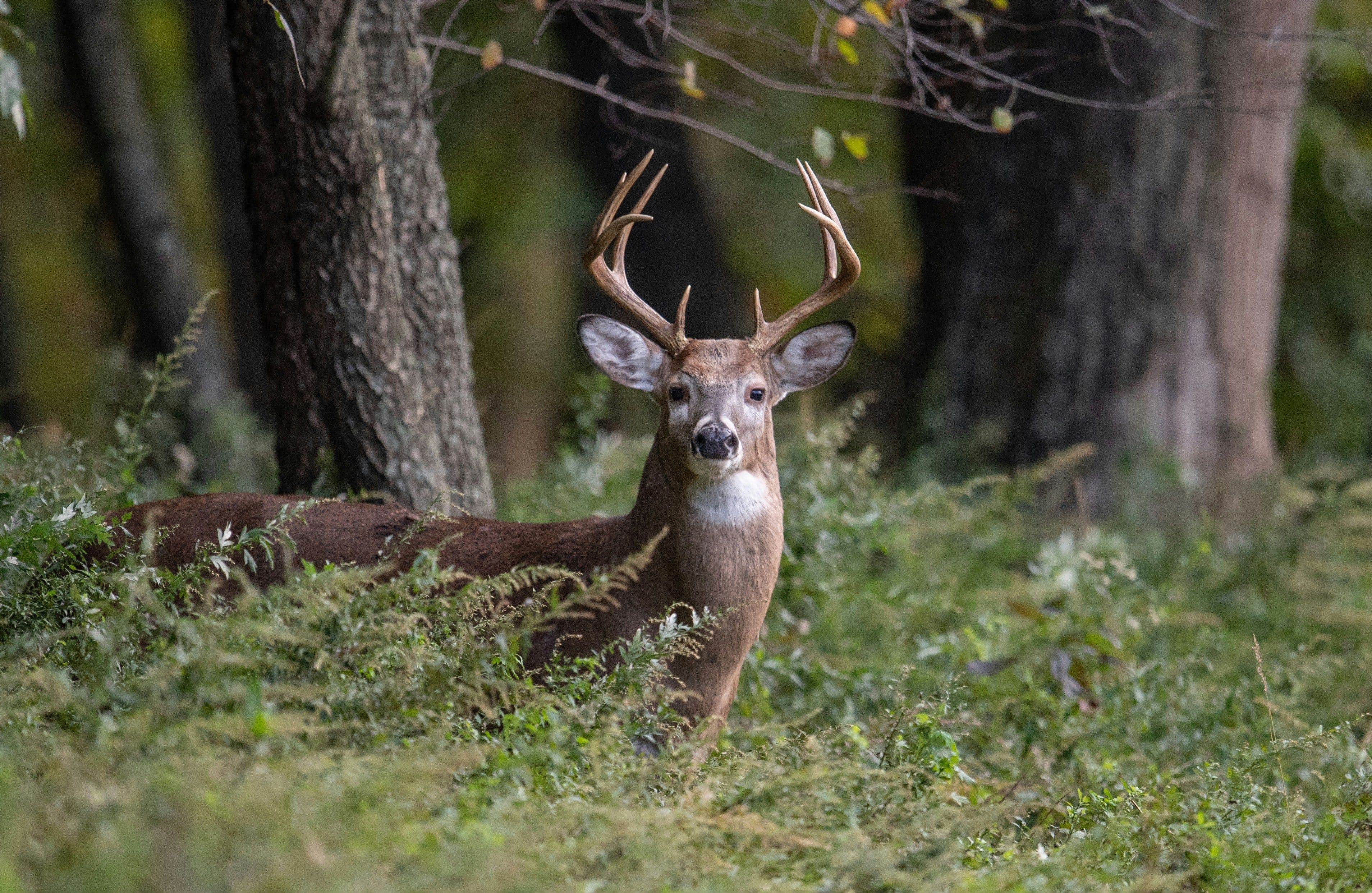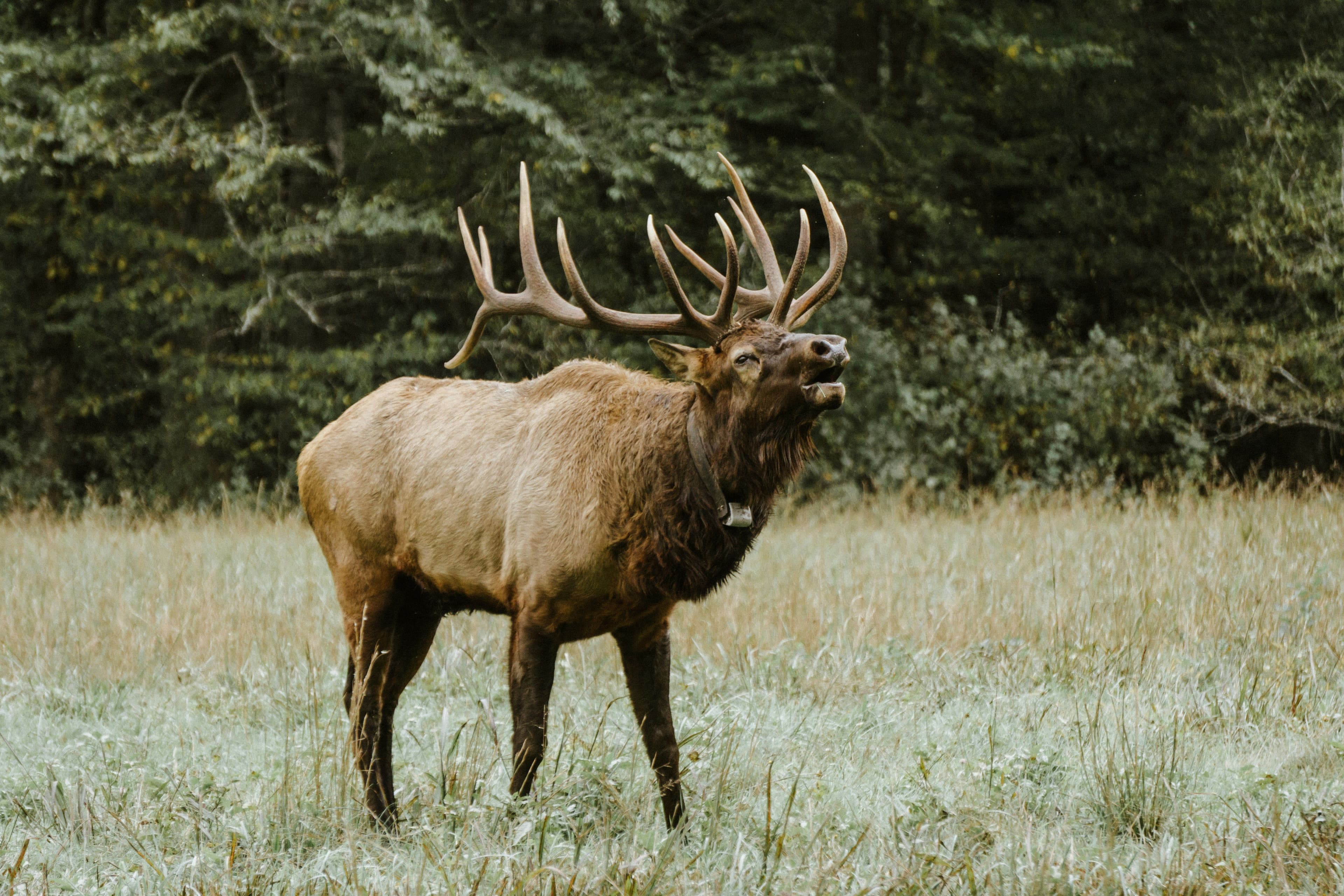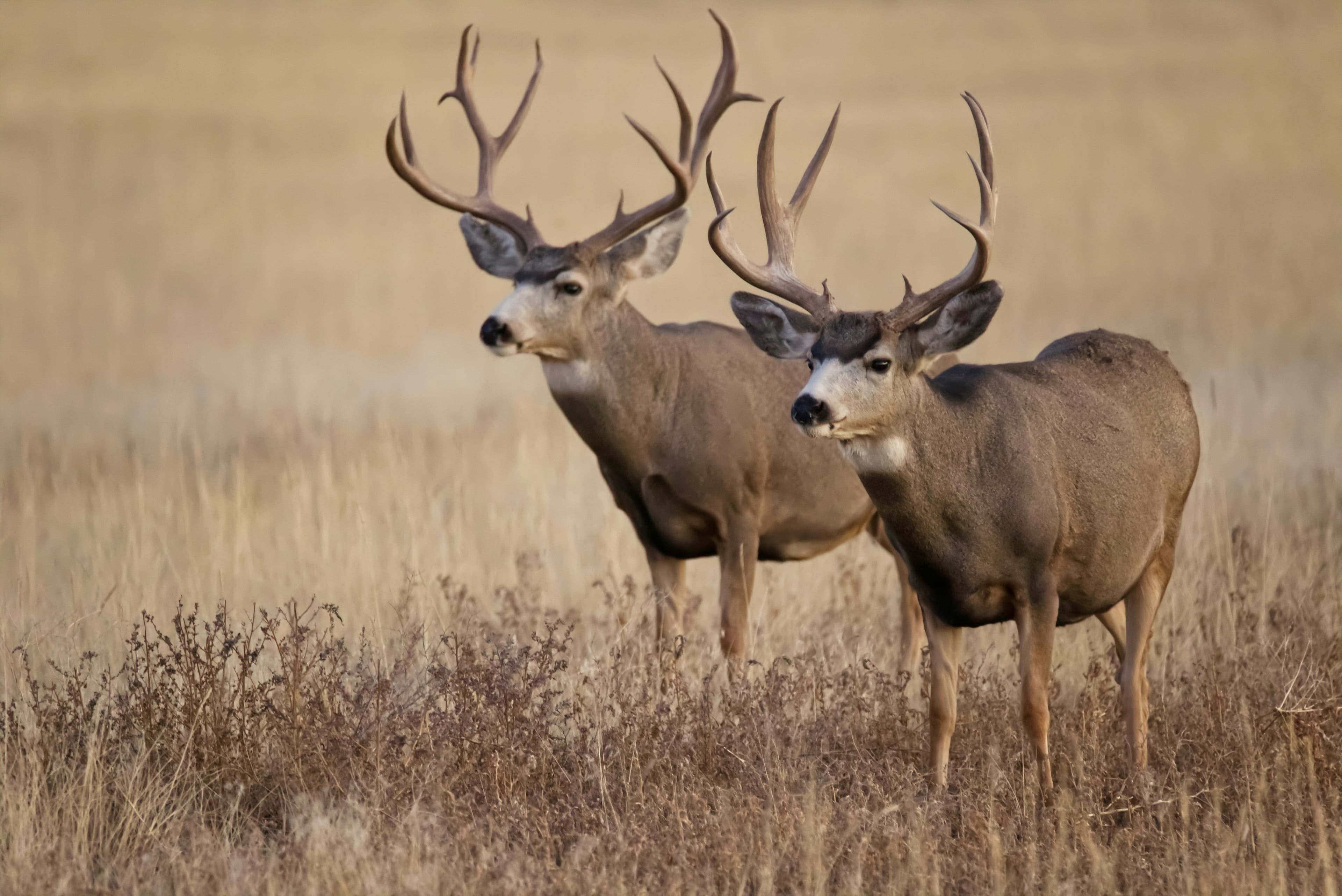Habitat Improvement for Game Management: Enhancing Wildlife Populations Through Strategic Conservation Practices


Justin Hunold
04/12/2024
Habitat improvement for game management is a crucial aspect of wildlife conservation practices. It involves a range of strategies to enhance game species' living conditions, such as deer, elk, and game birds, ultimately supporting their health and population levels. Effective habitat management benefits the targeted game species and improves the overall ecosystem health, increasing biodiversity. Ensuring the viability of game populations is particularly important for areas where hunting is a significant part of culture and economy and for maintaining ecological balance.
What considerations should be considered when creating a game habitat enhancement management plan?
One should consider the target species' biological requirements, the potential impacts on the ecosystem, land use compatibility, and the long-term maintenance and monitoring of the habitat.
Engaging in practices that improve habitat quality requires understanding the species-specific needs of game animals and how those needs intersect with the local environment and human activities. This includes considering food availability, habitat protection from environmental threats, and controlling invasive species that may compete with or prey upon game animals. Effective habitat improvement also involves sustainable land-use practices and often requires the involvement of landowners who can make significant contributions with the proper guidance and resources. As such, the interplay between wildlife habitats and agriculture, on-the-ground techniques for enhancing specific habitats, and ongoing research and monitoring efforts are all part of a holistic approach to game management.
Habitat Fundamentals
Effective game management relies on thoroughly understanding habitat fundamentals, focusing on conservation efforts, key vegetation roles, and the natural succession process.
Habitat Conservation and Ecosystem Services
Habitat conservation is crucial for maintaining biodiversity and ecosystem services that support wildlife populations. This includes preserving various natural landscapes—from wetlands to forests—that supply food, shelter, and breeding grounds for different species. Conservation practices often involve protecting critical areas, enforcing sustainable use limits, and restoring damaged ecosystems to ensure the survival of game species and the habitat's overall health.
The Role of Vegetation in Habitat Improvement
A diversity of vegetation types contributes significantly to habitat quality. One should emphasize creating structured vegetation layers for habitat improvement, ranging from low herbaceous plants to tall trees. Such stratification offers a plethora of benefits:
- Provides a food source for various trophic levels
- Serves as cover for nesting and protection
- Facilitates movement and dispersal of wildlife
Incorporating native plants into the landscape bolsters these layers and supports the interconnected web of local wildlife.
Succession and Habitat Development
Succession, the process through which habitats naturally evolve, plays a pivotal role in habitat development. Management strategies should consider this:
- Allowing areas to progress through successional stages
- Enhancing habitats for early-successional species when appropriate
- Recognizing that later stages of succession often support a higher biodiversity
By understanding and guiding succession, habitat management can maintain the delicate balance necessary to sustain game populations and the broader ecological community.
Wildlife Management Techniques
Effective wildlife management techniques are critical for sustaining healthy game populations and ensuring biodiversity. They involve a blend of science, conservation practices, and policy, targeting habitat improvement and population control.
How does habitat management contribute to the sustainability of wildlife populations?
Habitat management is vital for providing the resources wildlife species need to thrive, including food, shelter, and breeding grounds. This, in turn, supports healthy and sustainable populations over time.
Wildlife Habitat Manipulation
Wildlife Habitat Manipulation refers to the deliberate alteration of the environment to meet the specific needs of wildlife. Managers may provide supplemental feeding or improve natural forage to cater to the nutritional requirements of game species.
- Food: Enhance forage availability by planting food plots or dispersing feed.
- Cover: Create shelters using plantings or artificial structures to offer protection.
- Water: Construct or restore ponds and wetlands to ensure clean water sources.
- Space: Control species density to balance population with habitat capacity.
Implementing Management Plans
Management Plans are structured guides developed to achieve long-term conservation goals. They detail methods for:
- Monitoring and controlling wildlife populations.
- Implementing regulations like hunting quotas.
- Protecting endangered species and promoting biodiversity.
Forest Management plays a crucial role, potentially outlined in these plans, with strategies like controlled burns and selective logging to improve habitat quality.
Habitat Restoration Strategies
Habitat Restoration Strategies concentrate on reinstating natural environments to a healthy state. This often involves:
- Reforestation: Planting native trees to rebuild forest habitats.
- Wetland Restoration: Returning drained wetlands to their natural, water-filled condition.
- Erosion Control: Stabilizing soil with vegetation to prevent habitat degradation.
- Invasive Species Control: Removing or controlling non-native species that threaten native wildlife.
These methods support the overarching goals of Wildlife Conservation, maintaining viable populations within balanced ecosystems.
TOP 10 Land and Habitat Improvements For Whitetail Deer

Improving habitat for whitetail deer can significantly enhance hunting opportunities by attracting and sustaining healthy deer populations. Here’s a list of expected habitat improvements
- Food Plots: Planting food plots with crops like clover, alfalfa, brassicas, and cereal grains provides deer with nutrition and attracts them to specific areas.
- Water Sources: Establishing or maintaining water sources such as ponds or water troughs ensures deer access to water, especially in dry areas or during dry seasons.
- Cover Creation: Planting thickets and shrubs and leaving fallen trees provide deer with the necessary cover for bedding and protection from predators.
- Timber Management: Practicing selective logging to thin out dense forest areas can promote the growth of underbrush and young trees, which are beneficial for food and cover.
- Controlled Burns: Implementing controlled burns strategically can help regenerate nutritious forage plants that deer prefer.
- Edge Feathering: Allowing areas to grow into brushy, edge habitats creates transitional zones between habitats, like where woods meet fields.
- Mineral Sites: Establishing mineral sites can provide essential nutrients to deer and can be an attractant during certain times of the year.
- Travel Corridors: Enhancing or maintaining strips of cover that connect different parts of a deer’s habitat can encourage predictable and beneficial movement patterns for hunting.
- Sanctuary Areas: Designating areas where hunting is not allowed or is very limited can give deer a safe space to retreat, making them more likely to stay within an area during hunting season.
- Invasive Species Control: Removing or controlling invasive plant species helps ensure that native vegetation, which is more beneficial to deer, thrives.
Landowner Involvement and Resources
Effective habitat improvement for game management crucially depends on landowners' active participation and access to adequate resources and funding. This section outlines how conservation initiatives engage landowners in sustainable practices and the incentives available for initiating habitat projects.
Engaging Landowners in Conservation
Landowners are pivotal in conservation efforts, as they possess and manage areas critical for wildlife habitats. The Natural Resources Conservation Service (NRCS) assists by offering free technical advice to landowners, including resource assessment, practice design, and resource monitoring. By creating a personalized management plan, private landowners are empowered to make informed decisions to improve habitat quality on their land.
Steps for Landowner Engagement

Incentives and Funding for Habitat Projects
Funding and incentives for habitat enhancement are instrumental in enlisting landowner participation in conservation. Programs, such as those offered by the Pennsylvania Game Commission, provide custom solutions to create, preserve, and enhance wildlife habitat. The contractual assistance from these programs ensures that landowners willing to engage in habitat improvements have the financial support required to implement these changes successfully.
State Wildlife Grants Program (SWG): Managed by the U.S. Fish and Wildlife Service, this program allocates funds to states, territories, and the District of Columbia to support a broad range of wildlife conservation projects, including habitat management and species restoration. These funds are often used for projects targeting wildlife species of greatest conservation need as identified in State Wildlife Action Plans. More details are available on the U.S. Fish and Wildlife Service website.
Natural Resources Conservation Service (NRCS): Part of the U.S. Department of Agriculture, NRCS offers various programs such as the Environmental Quality Incentives Program (EQIP) and the Conservation Stewardship Program (CSP), which provide financial and technical assistance to landowners looking to enhance their land's ecological health. These programs cover a range of activities from soil conservation to habitat management for wildlife. You can find more information on the NRCS website.
Michigan Department of Natural Resources (DNR): Specifically for residents of Michigan, the DNR offers grants for deer habitat improvement in the Upper Peninsula. These grants are designed to enhance deer habitat, and they provide a straightforward application process for interested landowners. Detailed guidelines and application procedures are available on the Michigan DNR website
Colorado Parks & Wildlife (CPW): CPW provides funding through various programs designed to assist landowners with habitat conditions, work with ranchers to reduce wildlife conflicts, and support wildlife rehabilitation efforts. Notably, the Colorado Wildlife Habitat Program offers funding opportunities for private landowners to protect important wildlife habitats or provide wildlife-related recreational access. More information on these programs can be found on CPW's website.
Bureau of Land Management (BLM): The BLM manages habitat connectivity on public lands to support wildlife and plant populations. They focus on restoring and maintaining habitat connectivity and work collaboratively with state and tribal wildlife agencies. Their efforts include assessing habitat connectivity to guide management decisions and support the movement and ecological processes of priority species. Details about their initiatives can be found on the BLM's habitat connectivity page.
Landowners interested in participating are encouraged to contact their local conservation agencies and explore the variety of resources available to support their commitment to wildlife habitat improvement.
Sustainable Hunting and Game Animals
Sustainable hunting practices are integral to wildlife conservation, benefiting game species and ecosystems. Strategies for habitat improvement and species management are cornerstones of this approach.
How often should game habitat improvement practices be reviewed and updated for maximum effectiveness?
Game habitat improvement practices should be reviewed and updated annually or as frequently as needed to respond to changing conditions and align with the latest conservation research and guidelines.
Balancing Hunting with Conservation
Hunting, when managed sustainably, can be a powerful tool for conservation. It supports the maintenance of healthy populations of game animals, such as big game, wild turkeys, mule deer, pheasants, and white-tailed deer. Using funds generated from hunting licenses, conservation programs can implement measures to ensure these species thrive in their natural habitats. Counsel from wildlife experts is crucial to setting appropriate seasons and harvest limits. The selective harvest of mature males or surplus females helps maintain a balanced ecosystem, preventing overpopulation and ensuring a diverse gene pool.
- Selective Harvest: Targeting specific animals, like mature males, to maintain population dynamics.
- License Funds: Utilizing revenue from hunting licenses for conservation efforts.
Improving Habitats for Game Species
Which techniques are most effective for managing habitats to support diverse game species?
Techniques such as rotational cropping, controlled burns, invasive species control, and establishing buffer zones enhance habitats by promoting ecological diversity beneficial for various game species.
Top 10 Tips for Habitat and Land Improvement for Elk

Improving the habitat for elk is crucial for supporting their populations and enhancing hunting opportunities. Here are some expected habitat improvements specifically geared toward elk:
- Water Developments: Building or improving water sources like ponds, springs, and water catchments can provide critical hydration points for elk, especially in arid regions.
- Forage Enhancement: Planting or encouraging the growth of native grasses, forbs, and shrubs that are high in nutritional value can significantly improve elk food availability.
- Forest Management: Implementing selective logging or thinning practices can open up overly dense forests, promoting the growth of understory vegetation that serves as food and cover for elk.
- Controlled Burns: Using prescribed fire can help maintain and restore open landscapes, which elk prefer for grazing. This also helps in managing the encroachment of trees into meadows.
- Revegetation of Disturbed Sites: Restoring areas degraded by human activity (such as roads, trails, and cleared lands) with native vegetation can enhance habitat quality.
- Riparian Area Restoration: Protecting and enhancing streamside zones ensures these critical areas provide necessary water, forage, and shelter for elk.
- Travel Corridors: Maintaining connectivity between different habitat areas through corridors allows elk to move safely across the landscape, accessing different seasonal habitats.
- Fencing Adjustments: Modifying fences to be wildlife-friendly ensures elk can move freely without risk of injury, mainly by providing lower fence heights or wildlife gaps.
- Winter Range Management: Protecting and managing winter ranges is essential for elk survival during the harsh months. Efforts include reducing disturbances, managing snow levels, and ensuring sufficient forage.
- Predator Management: Balancing predator populations in areas heavily populated by elk can help manage elk's natural dynamics and survival rates.
These habitat improvement strategies are tailored to meet the specific needs of elk, considering their large range requirements and migratory patterns. Implementing these improvements can lead to healthier elk populations and better hunting opportunities.
Habitat improvement is vital for sustaining game species. The practices vary based on species and location but generally include measures like brush pile creation, controlled burns, and the enhancement of food availability. For instance, tree reduction can increase forage for deer species, while burning moorlands may improve habitats for certain bird species. These interventions benefit the targeted game animals and contribute to the ecosystem's overall health, supporting a variety of non-target species.
- Brush Piles: Providing cover for small game.
- Controlled Burns: Mimicking natural processes to revive the ecosystem for various species.
- Food Plots: Offering a food source to enhance survival and reproduction.
By applying these strategic measures, stakeholders can ensure the longevity and sustainability of game species and their habitats.
Top 10 Tips for Habitat Improvement for Mule Deer

Improving the habitat for mule deer is essential for supporting their populations and enhancing hunting opportunities. Here’s a list of expected habitat improvements tailored for mule deer:
- Water Developments: Creating or enhancing water sources like guzzlers (artificial water catchments) and small ponds can be critical in arid environments where mule deer reside.
- Food Plots: Although less common than whitetail deer, planting native shrubs and forbs that are part of the mule deer's natural diet can help support their nutritional needs, especially in degraded areas.
- Sagebrush Rehabilitation: Since mule deer often inhabit sagebrush ecosystems, restoring these areas through techniques like reseeding native plants can improve forage quality.
- Forest Thinning: Reducing tree density in overly dense forested areas can stimulate the growth of ground-level vegetation that mule deer feed on, improving their food availability.
- Controlled Burns: Prescribed fire management can help regenerate key forage species beneficial to mule deer and reduce tree encroachment in sagebrush and grassland areas.
- Brush Management: Clearing or reducing invasive brush species and promoting the growth of native brush can enhance food and cover availability.
- Riparian Area Restoration: Protecting and restoring streamside vegetation ensures these vital areas provide mule deer water, food, and shelter.
- Travel Corridors: Maintaining and restoring travel corridors through continuous strips of habitat allows mule deer to move safely between feeding, watering, and bedding areas.
- Fencing Modifications: Adjusting fence heights and configurations to ensure mule deer can move freely without injury or barrier to access critical habitats.
- Winter Range Protection: Since mule deer are particularly vulnerable in winter, protecting and managing winter ranges is crucial for their survival, which might include limiting disturbances and enhancing forage.
Conservation Organizations With Land Improvement Programs
Many of us enjoy attending banquets, participating in raffles, reading magazines, and donating our time and money to conservation organizations. By partnering with these organizations, we can work together to improve hunting land and promote the well-being of the natural environment. Establishing a long-term partnership with such organizations can be as beneficial to landowners as it is to the flora and fauna. Below is a list of conservation organizations that offer programs for land and habitat improvement.
- National Deer Association: Focuses on the future of white-tailed deer, wildlife habitat, and hunting heritage through balanced deer populations and habitat improvement. Learn more on their website.
- National Wild Turkey Federation (NWTF): Engages in habitat enhancement projects to increase hunting opportunities for turkeys, part of their "Save the Habitat. Save the Hunt." initiative. Details are available on the NWTF website.
- Ducks Unlimited: Works on waterfowl and wetlands conservation, focusing on habitat restoration and management to benefit waterfowl populations, with initiatives in land acquisitions and conservation easements to improve hunter access. Visit Ducks Unlimited's website for more information.
- Rocky Mountain Elk Foundation (RMEF): Dedicated to conserving elk habitats, ensuring the future of elk, wildlife, and hunting heritage, with a strong emphasis on habitat restoration and public access for hunting. Find more details on the RMEF website.
- Pheasants Forever: Known as "The Habitat Organization," it works on wildlife habitat conservation projects, particularly for upland habitats, helping landowners with habitat improvement efforts and the Conservation Reserve Program (CRP) contracts. Learn how to get involved on Pheasants Forever's website.
- Mule Deer Foundation (MDF): Dedicated to conserving mule deer, black-tailed deer, and their habitats. The MDF works on projects that improve habitat conditions, manage wildlife populations, and enhance hunting opportunities through various land and wildlife management programs. More information can be found on the Mule Deer Foundation's website.
These organizations provide valuable resources and initiatives that help landowners enhance habitats for various wildlife, contributing significantly to conservation and improved hunting opportunities.
This is where we are leaving you for now, but don’t worry. Part 2 will continue with some of the details of land improvement.